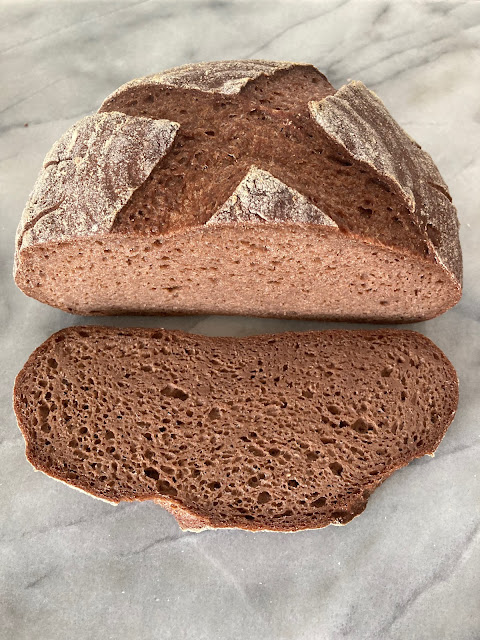Tips for Finding the Right Bread
I wanted to write a quick note on how I have found a few store-bought breads that I like. I have a method that I employ in selecting a good loaf, and for avoiding the hard, virtually inedible bread that some well-meaning companies try to pass off as nutritious. Some of these tips can even be used for gluten-free and wheat-based breads alike! Here is a step-by step procedure on how to select the best loaf for you.
1) Pick up the bread. Note its weight. If it seems unusually heavy, it is probably a very dense bread. This can sometimes be a bad sign for gluten-free products, as it indicates that the dough hasn't risen much, a problem typical with GF products. In itself, heaviness is not always a deal-breaker.
 2) Squeeze the loaf. It should be a little resilient. If the loaf is both very heavy and un-squeezable, you may have a coarse, hard bread on your hands.
2) Squeeze the loaf. It should be a little resilient. If the loaf is both very heavy and un-squeezable, you may have a coarse, hard bread on your hands.
3) Look at the ingredients. If there is only one type of grain in the bread, then it is probably fairly tasteless, and the texture will be lacking. I look for a good blend of several grains as well as a good percentage of potato flour. This non-grain flour gives a GF product a moistness and softness that it's hard to come by with other flours.
4) Look at the date and the packaging. Gluten-free breads get stale more quickly than wheat breads. Some products come in special vacuum packaging or are double-bagged to prevent drying.
Even if you can't find some of the breads I have mentioned in my post Loaves for the Starving, these tips can help you to find some better breads on your own.
1) Pick up the bread. Note its weight. If it seems unusually heavy, it is probably a very dense bread. This can sometimes be a bad sign for gluten-free products, as it indicates that the dough hasn't risen much, a problem typical with GF products. In itself, heaviness is not always a deal-breaker.
 2) Squeeze the loaf. It should be a little resilient. If the loaf is both very heavy and un-squeezable, you may have a coarse, hard bread on your hands.
2) Squeeze the loaf. It should be a little resilient. If the loaf is both very heavy and un-squeezable, you may have a coarse, hard bread on your hands.3) Look at the ingredients. If there is only one type of grain in the bread, then it is probably fairly tasteless, and the texture will be lacking. I look for a good blend of several grains as well as a good percentage of potato flour. This non-grain flour gives a GF product a moistness and softness that it's hard to come by with other flours.
4) Look at the date and the packaging. Gluten-free breads get stale more quickly than wheat breads. Some products come in special vacuum packaging or are double-bagged to prevent drying.
Even if you can't find some of the breads I have mentioned in my post Loaves for the Starving, these tips can help you to find some better breads on your own.



Comments